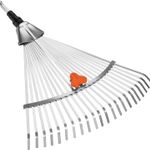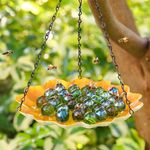
This widespread genus has given the gardening world a spectacular array of species and cultivars that rarely disappoint, thanks to their performance, durability, and beauty. Most are quite bulletproof if sited correctly and will provide years of performance in the garden with no insect, disease, or pest problems—with the exception of an occasional rabbit lining its burrow with spring foliage. The following are a few favorite selections from around the world that exemplify some of the most distinctive features that this diverse genus can offer.
Eye-catching blooms set cherry blossom sedge apart

Carex scaposa
Zones: 7–9
Size: 12 inches tall and wide
Conditions: Partial shade; average to moist, well-drained soil
Native range: Southern China and Vietnam
Cherry blossom sedge is relatively new to the market but is making a huge splash, thanks to the incredibly showy 12-inch spikes of pink flowers which top the foliage in early fall. It has a clumping habit, with tapered evergreen leaves that are about an inch and a half wide. If old foliage starts looking bedraggled in summer, trim it back and wait for it to erupt again in fall. It appreciates moist soil and light shade, and since it is a cool-season grower it is best planted in fall.
For unexpected color, plant ‘Prairie Fire’ orange New Zealand sedge

C. testacea ‘Prairie Fire’
Zones: 6–10
Size: 24 inches tall and 30 inches wide
Conditions: Full sun; moist, well-drained soil
Native range: New Zealand
Several of the New Zealand species are grouped jokingly under the moniker “dead sedges” due to their coppery or buff foliage color. ‘Prairie Fire’ orange New Zealand sedge is no such shrinking violet with wiry, copper-green leaves and orange highlights. Its brilliantly tinted evergreen foliage forms upright, arching tussocks that sparkle in the late-season sun. Inconspicuous tan flowers emerge on arching stems in mid to late summer. This species grows naturally in damp meadows, and in a garden setting will perform best in soil that is on the moist side of average.
‘Silk Tassel’ Morrow’s sedge is a fine choice for full sun

C. morrowii var. temnolepis ‘Silk Tassel’
Zones: 5–9
Size: 1 foot tall and 2 feet wide
Conditions: Full sun to partial shade; average to wet soil
Native range: Eastern Asia
The wispy evergreen foliage and bright variegation of ‘Silk Tassel’ Morrow’s sedge give this clumping cultivar an elegant and distinctive look. Its narrow leaves with thin, white centers are especially lovely when they move in the breeze. It is equally great as an accent, in a pot, or planted en masse. While many sedges prefer shade, this one is at its best in full sun but will tolerate moderate shade.
Island Brocade broadleaf sedge has bamboo-like texture

C. siderosticha var. pilosa ‘Shima Nishiki’
Zones: 5–8
Size: 6 inches tall and 36 inches wide
Conditions: Partial to full shade; average to wet soil
Native range: Japan, China, and Korea
Island Brocade broadleaf sedge is a spreading variety that slowly forms a low, dense, ground-covering mat of foliage. Its 1-inch wide, pale green leaves have pale yellow margins and are streaked with yellow. It is deciduous and will retreat mostly below ground during the winter months. Grow it in a shady, average to moist soil. If it flowers, which it rarely does, the small, tan-tipped spikes will arrive in late spring. The cultivar name for this sedge translates from Japanese to English as island (shima) brocade (nishiki).
‘Everlime’ Japanese sedge is sweet and subtle


C. oshimensis ‘Everlime’
Zones: 5–9
Size: 12 inches tall and wide
Conditions: Partial shade; average to moist soil
Native range: Japan
‘Everlime’ Japanese sedge is part of the exceptional EverColor® series, which consists of cultivars from C. oshimensis that range from deep green to gold. ‘Everlime’ is more subtle than some of the other forms, with arching, jade leaves edged with paler green (inset photo). Regular moisture and some shade are all it needs to thrive, and it will do fine in average soil. Its spring flowers are brownish-tan tufts held on triangular stems.
‘Sparkler’ palm sedge is a unique ground cover option

C. phyllocephala ‘Sparkler’
Zones: 7–10
Size: 18 inches tall and wide
Conditions: Partial to full shade; average to wet soil
Native range: China
Although ‘Sparkler’ palm sedge has been around for some time, it never fails to be a garden standout. Short and stocky 12-inch stems are topped by spirals of foliage, each leaf brightly edged with pure white. The effect is a bit like fireworks or miniature, snow-topped palm trees. Tan terminal flowers emerge from late spring to early summer. This is a perfect candidate for blanketing the ground of a woodland garden. It will appreciate all the moisture it can get, though it will adapt to average soil moisture conditions.
Mark Weathington is the director of the JC Raulston Arboretum at NC State University in Raleigh, North Carolina, and the author of Gardening in the South: The Complete Homeowner’s Guide.
Fine Gardening Recommended Products

Gardena 3103 Combisystem 12-Inch To 20-Inch Adjustable Metal Fan Rake Head
Fine Gardening receives a commission for items purchased through links on this site, including Amazon Associates and other affiliate advertising programs.

Scotts Cordless Grass-Shear/Shrub-Trimmer Combo
Fine Gardening receives a commission for items purchased through links on this site, including Amazon Associates and other affiliate advertising programs.
- 13.5 x 3 x 5 inches
- Uses a 7.2-Volt 2Ah high-capacity built-in lithium-ion battery; Includes a fast charger

Bee Watering Station with Vivid Flower Design
Fine Gardening receives a commission for items purchased through links on this site, including Amazon Associates and other affiliate advertising programs.



















Comments
Log in or create an account to post a comment.
Sign up Log in